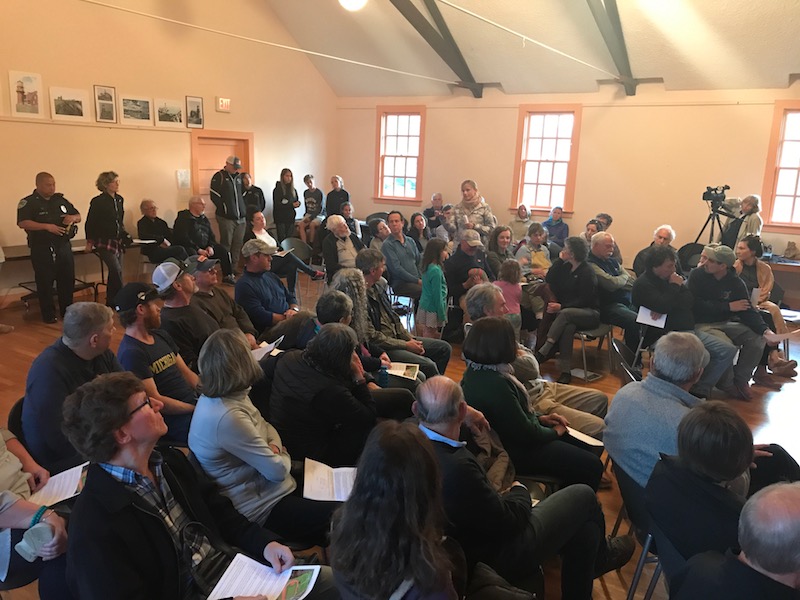Aquinnah became the fifth and final town Tuesday night to approve the use of surplus funds for design work on the high school athletic fields overhaul, voting 24-18 to pass the measure at a well-attended special town meeting.
The large turnout underscored the ongoing contentiousness around the plan to replace the main grass playing field with an artificial turf field. There also have been questions about the appropriateness of using so-called excess and efficiency funds for a special purpose project that falls outside the budget, and how the project fits into the much larger and still unformed plan to renovate or replace the aging high school building.
Those questions surfaced again on Tuesday night.
The lone article on the warrant asked voters to approve the use of $350,000 in E and D money to hire an owner’s project manager for the design work on a new track and field. Replacing the failed track has been a stated priority.
The total cost of the project is estimated at $6.7 million. Vineyard schools superintendent Matthew D’Andrea has said most of the money will come from fundraising, although he has declined to state specifics.
The proposal has cleared four other towns but failed in Chilmark.
On Tuesday night, Mr. D’Andrea gave a final push for the proposal. High school athletes handed out fliers describing the proposed facility before the meeting and lined the back of the old town hall along with school administrators.
“Our track has failed,” Mr. D’Andrea said. “This vote will be a vote in support of students . . . we need to invest in these students with high quality playing fields.”
Allen Rugg, chairman of the Aquinnah finance committee, said approving the request would have no impact on the strained town budget. At the annual town meeting and election next week voters will face a $375,000 Proposition 2 1/2 override.
“That override is largely driven by education,” Mr. Rugg said. “But this vote tonight will have no impact on our budget . . . Members of the fincom might disagree on the merits of grass versus turf. But we reached unanimous decision that this is not a budget issue.”
Other voters questioned Mr. D’Andrea about a project and funding process they considered to be flawed.
“It seems to me like this is an item that should have been budgeted for and that E and D funds shouldn’t be used for this,” Susan Anderson said. She also said the project plans should include alternatives.
“I feel like if you’re going to spend this kind of money on a synthetic field within the track, and I’m 100 per cent behind the track . . . there should be included within that design a possible turf and a grass field as well,” Ms. Anderson said. “It just seems like you’re all straightforward on this one particlar plan when this plan has so many bumps in the road between here and there.”
Adrian Higgins agreed, questioning whether the excess and deficiency funds should be spent on the school building first.
“We want to make sure the little money we do have is spent wisely . . . and it’s getting out of control,” Mr. Higgins said. “Why don’t we use the money to fix the school if the school is broken?”
Meg Bodner echoed the remarks.
“It seems we are doing things in the wrong order,” she said.
Mr. D’Andrea said the field renovations are also part of the larger building overhaul.
“They are both important,” he said, speaking about the athletic facilities and the building. “This is the first step in a multiple step process that will make better use of the space we have and the acreage we have.”








Comments (2)
Comments
Comment policy »